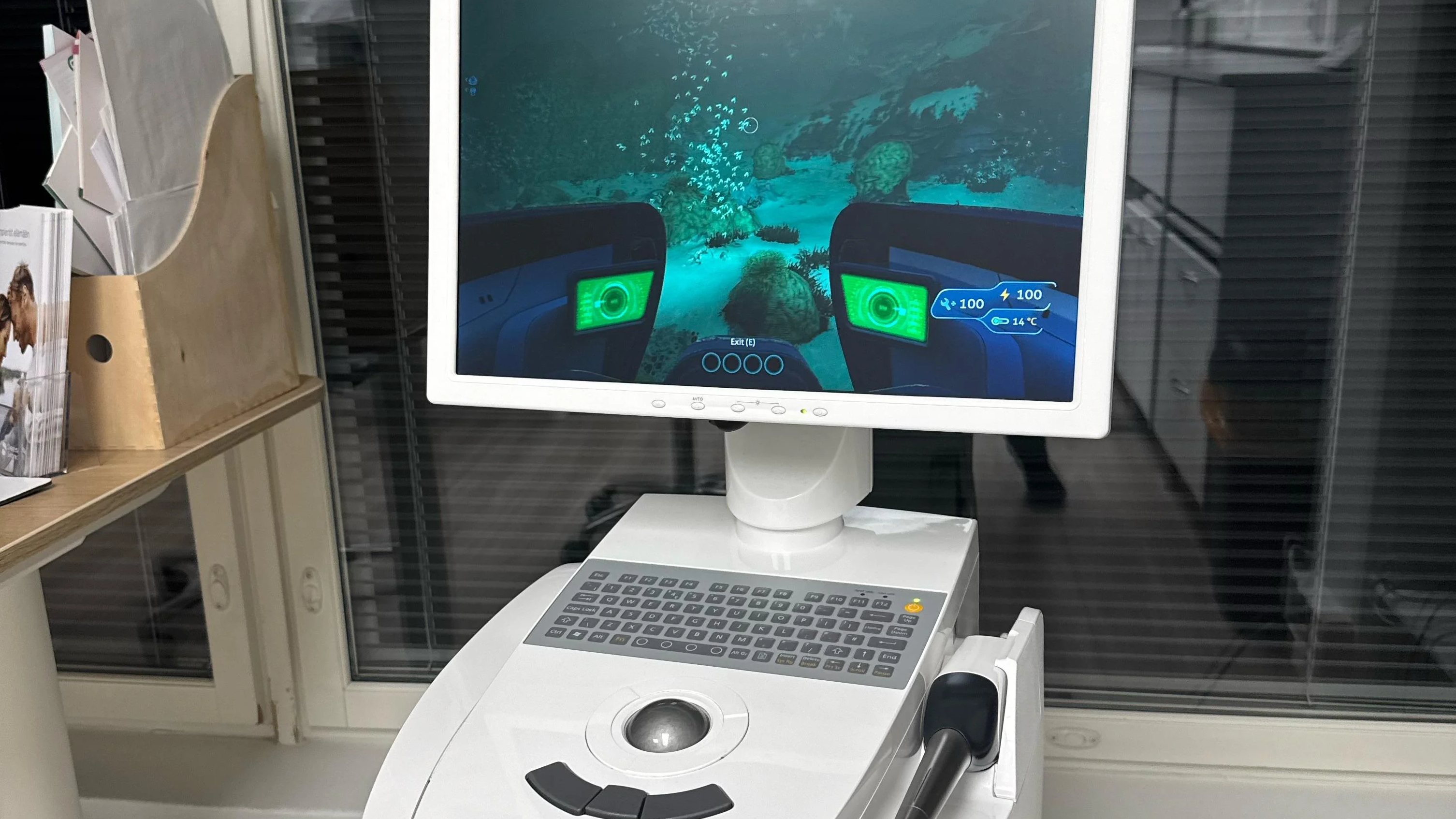Game played on a 3D dental scanner with an old Intel CPU and AMD GPU — up to 700 FPS on Counter-Strike: Source
The 3D scanner uses a 75 Hz display powered by an 5th Gen Intel CPU and an unspecified AMD R9 200 Series GPU

Ever wonder what those PCs used as 3D dental scanners at your local dental clinic are really capable of? Three days ago, Redditor u/AfternoonPutrid8558 on the r/PCMasterRace subreddit shared a story and a set of photographs in which he tested this exact question out, thanks to being granted brief after-hours access to his father's dental clinic. Limited time and free storage were the biggest limiting factors at play here, with a 100 megabits per second download speed, making some larger game installs unfeasible within the time window.
In any case, u/AfternoonPutrid8558 did seem to have plenty of time to capture the unique characteristics of this 3D dental scanner.
The system uses a Haswell-E 5th Gen Intel Core i7-5720K with an MSI Raider X99 motherboard, running at 3.3 GHz with 32GB of DDR4-2999 RAM. Those are old specifications—the CPU and platform are from 2014, just after DDR4 was initially adopted—but they were still surprisingly adequate for gaming until around the PS4 era.
Gaming on a dental computer from r/pcmasterrace
Where newer games have become much more strictly demanding on CPU and GPU requirements, the relatively low power of mid-gen PS360 and PS4/XB1 kept many older PC architectures competitive in multi-platform titles much longer than if games pushed the limits with every CPU/GPU refresh cycle.
While we don't know what exact GPU is used within this 3D dental scanner, the system information at least tells us it's an AMD Radeon R9 200 series GPU. Perhaps a Radeon R9 270X, 280X, or 290X? While these cards don't compare to AMD's present-day RDNA GPU fare or even old budget staples like the RX 580, they're still more than enough for indie games and older, less demanding titles.
u/AfternoonPutrid8558 tested these specifications in two games: a classic multiplayer shooter released in 2004, Counter-Strike: Source, and an underwater survival game released in 2014, Subnautica. CS:S ran at a whopping 600-700 FPS, leveraging the onboard CPU near-perfectly, while Subnautica still turned around a respectable 60 FPS, being about ten years newer but still targeted at a wide range of GPU specs. u/AfternoonPutrid8558 also notes that Subnautica's sea moth controls feel "surprisingly elegant" when done with the large trackball mouse used by the 3D dental scanner. However, we imagine those controls would feel much less elegant in a multiplayer match of Counter-Strike, 600 FPS or not.
Get Tom's Hardware's best news and in-depth reviews, straight to your inbox.

Christopher Harper has been a successful freelance tech writer specializing in PC hardware and gaming since 2015, and ghostwrote for various B2B clients in High School before that. Outside of work, Christopher is best known to friends and rivals as an active competitive player in various eSports (particularly fighting games and arena shooters) and a purveyor of music ranging from Jimi Hendrix to Killer Mike to the Sonic Adventure 2 soundtrack.
-
SocDriver I work at a company that makes dental lab equipment and some of our newer scanners are rocking i9-14700 and RTX 4070s. We have even fired IT guys that have taken some of the dental lab computers home for "testing" and we find out they just wanted a gaming machine.Reply -
evdjj3j Those are old specifications—the CPU and platform are from 2014, just after DDR4 was initially adopted—but they were still surprisingly adequate for gaming until around the PS4 era.Reply
What does that even mean? The PS4 was released in 2013 a year before this CPU. -
King_V Reply
Yikes!! Exactly how much processing and GPU power do dental scanners actually need?SocDriver said:I work at a company that makes dental lab equipment and some of our newer scanners are rocking i9-14700 and RTX 4070s. We have even fired IT guys that have taken some of the dental lab computers home for "testing" and we find out they just wanted a gaming machine. -
usertests Reply
Enough to render your tooth decay in 16K resolution.King_V said:Yikes!! Exactly how much processing and GPU power do dental scanners actually need? -
Cyber1999 "While we don't know what exact GPU is used within this 3D dental scanner, the system information at least tells us it's an AMD Radeon R9 200 series GPU. Perhaps a Radeon R9 270X, 280X, or 290X?"Reply
The screenshot of CPU-Z indicates that the GPU is a “Tonga" model and has 2GB of RAM. Which makes it a variant of the "Radeon R9 285". The R9 270/280/290 would be "Curacao", "Tahiti" or "Hawaii". -
jlake3 Reply
THIS. A search of the GPU-Z database for Tonga only returns one card with 2gb of VRAM, and in addition to being a different die I also don’t think the 280X/290X ever were offered in a 2gb configuration.Cyber1999 said:"While we don't know what exact GPU is used within this 3D dental scanner, the system information at least tells us it's an AMD Radeon R9 200 series GPU. Perhaps a Radeon R9 270X, 280X, or 290X?"
The screenshot of CPU-Z indicates that the GPU is a “Tonga" model and has 2GB of RAM. Which makes it a variant of the "Radeon R9 285". The R9 270/280/290 would be "Curacao", "Tahiti" or "Hawaii".
Little surprised by the use of a R9 285, though. AMD actually made versions of the FirePro with branded coolers for medical imaging companies, where they’ve apparently carved out a niche. I’d have expected either a vanilla W7100 or one branded to match the machine, depending on who built it. -
Cyber1999 Reply
Hmm, I think the idea here was cutting costs. The R9 285 was round about 250 USD, had the full GCN 3.0 instruction set and the "limited" 2GB VRAM wasn't a deal breaker it seems. IIRC the W7100 was north of 750 USD at release and strangely enough is still available.jlake3 said:Little surprised by the use of a R9 285, though. AMD actually made versions of the FirePro with branded coolers for medical imaging companies, where they’ve apparently carved out a niche. I’d have expected either a vanilla W7100 or one branded to match the machine, depending on who built it. -
Master_Shifu Reply
Hilarious :sweatsmile: I wonder how dental labs equipment are missing. Found out it was gamers, probably they head the news before and start testing every version of counter strike.SocDriver said:I work at a company that makes dental lab equipment and some of our newer scanners are rocking i9-14700 and RTX 4070s. We have even fired IT guys that have taken some of the dental lab computers home for "testing" and we find out they just wanted a gaming machine.